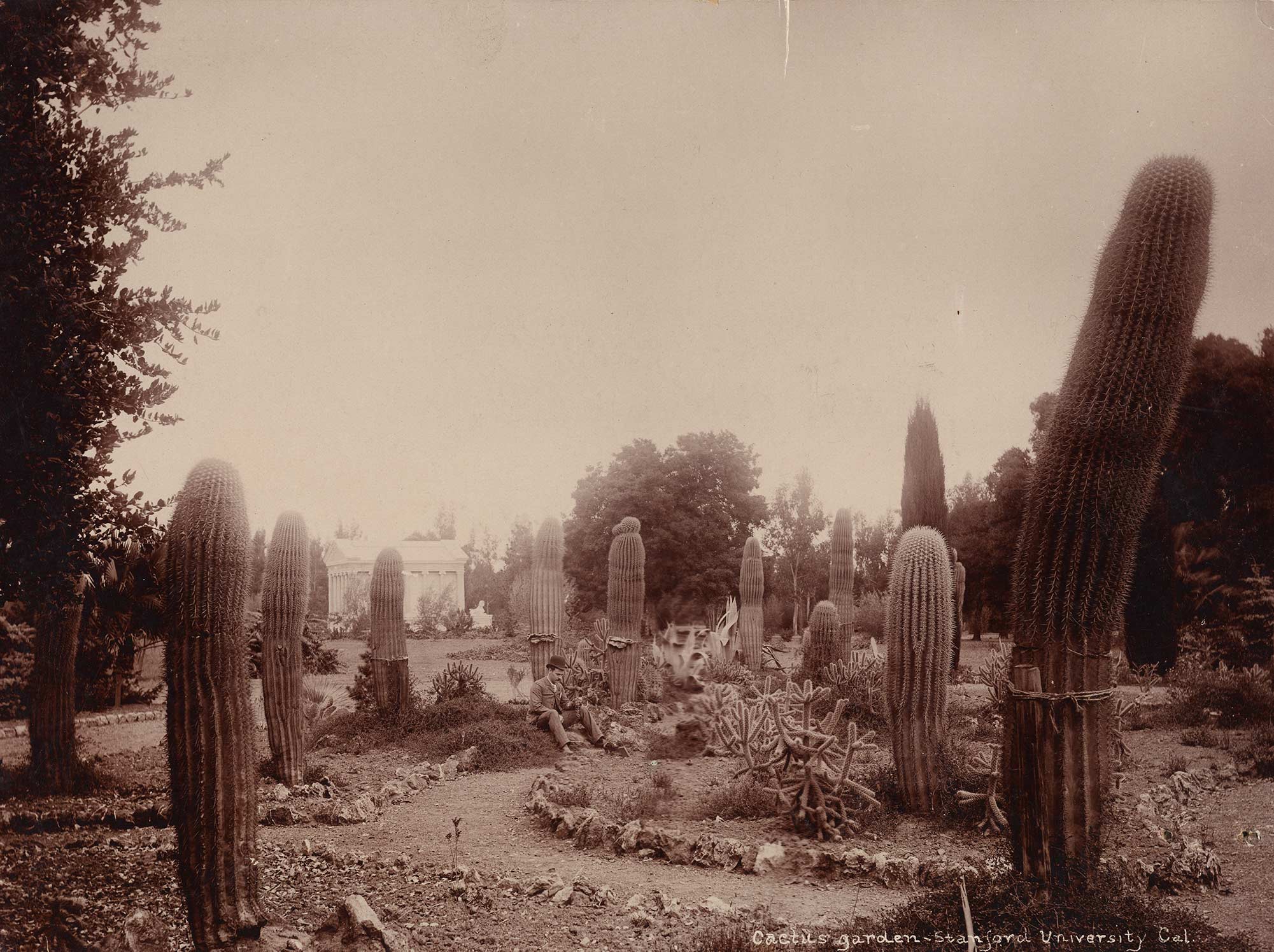Carnegiea gigantea
 saguaro
saguaro

The saguaro was the principal visual element of the Arizona Garden as originally designed and installed by landscape architect Rudolph Ulrich in the early 1880s. Not a single one of these prized plants has survived, and exactly how and when they all disappeared is unknown. Based on heights recorded in historic photographs, most of the specimens were at least 50 to 75 years old when they were brought to the garden in the 1880s. The plants typically live 200 years, so senescence is certainly a viable explanation, as is death from a severe frost. But all of them? And when?
About this Entry: This entry, added Sep 2020, is based on Julie Cain’s article “Rudolph Ulrich and the Stanford Arizona Garden” (Sandstone & Tile Volume 27, Number 2 (Spring/Summer): 1–14, Stanford Historical Society).



